Www Energy Design Tools Aud Ucla Edu Climate Consultant
Note #1:Where professors associated with the Carbon Neutral Design Project have used the software in their coursework, their comments will be located below the software description and a link to their assignment hot linked to their name in the right hand column.
Note #2: It will be noted if the product is available as a FREE DOWNLOAD, ONLINE TOOL or purchased product. For pricing for products for purchase please visit the associated website.
Note #3: The required OS will be noted. Most of the Energy Programs are PC based only. For Mac users, it is recommended to run the programs using a PC simulator such as Bootcamp, Parallels or Virtual PC.
Note #4: Where possible, screenshots will be provided so that you can get an idea of the nature of the interface. These will be located in the right hand column. Click on the thumbnail for a larger version of the image.
Energy Modeling Software
Click on the Image for a Screenshot!
Software Name
Description / URL / Comments
Professors / Projects
A Course in Climate Responsive Building Design
http://www.aud.ucla.edu/energy-design-tools/
FREE DOWNLOAD (software mostly PC)
The software and problems sets have been provided by Professor Emeritus Murray Milne to assist designers in understanding Climate Responsive Building Design. Scroll towards the bottom of the above linked page for more information, and to access the course materials.
Building Design Advisor
http://gaia.lbl.gov/BDA/
(PC only)
A powerful buildings design tool that will unify various specialized tools previously developed at LBNL makes it easy to compare design alternatives and includes multimedia resources such as a case-study library.
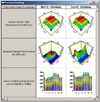
Climate Consultant 4
http://www.aud.ucla.edu/energy-design-tools/
FREE DOWNLOAD (PC only)
This program graphically displays climate data in either metric or imperial units in dozens of ways useful to architects including monthly bar charts, timetable charts, and psychrometric charts, sun shading charts, and sun dial charts. 3-D plots show temperatures, humidity, radiation, and sky cover. The "Wind Wheel" graphics shows velocity and direction correlated with temperature and humidity, and can be animated hourly or daily or monthly. The psychrometric analysis recommends the most appropriate passive design strategies as outlined in Givoni's "Man Climate and Architecture". It develops the kind of data incorporated in Watson and Labs "Climatic Building Design". It calculates a set of the top 20 Design Guidelines based on your unique climate and the passive design strategies you selected on the Psychrometric Chart. Each Guideline has a sketch illustrating how it applies. Climate data is available for over two thousand locations from the EnergyPlus web site. A new web-based dynamic graphic tutorial explaining the Psychrometric Chart and how it applies to human thermal comfort and to HVAC systems design is also available on this web site.

Use Climate Consultant and the Weather Tool to determine design strategies that could be incorporated in the design of the house to reduce energy use and CO2 emissions.
Using Climate Consultant to develop appropriate strategies.
COMcheck
http://www.energycodes.gov/comcheck/ez_download.stm
FREE DOWNLOAD (for both Mac and Windows)
The above link takes you to the Department of Energy site to access this compliance tool and materials that make it easier for designers, builders, product manufacturers, and code officials to comply with energy codes based on the IECC or ASHRAE/IESNA Standard 90.1 requirements. The COMcheck™ compliance product include software and accompanying user's guides, videos, training materials, and compliance manuals.
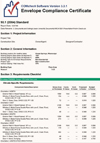
Use COMcheck and Building Green Suite to validate the design of the building envelope.
Theis - Design Development Envelope
Accurate utilization of COMcheck, especially the proper input of information and the validation of this information through detailed drawings.
DOE-2
http://eetd.lbl.gov/eetd-software-doe2.html
An advanced computer program that simulates hourly building energy use. This program is an international benchmark and is used as the basis of building standards in the U.S. and other countries. DOE-2 is also the basis of numerous handbooks on energy-efficient buildings and building components. Many design and consulting firms use DOE-2 as the main engine of their services.
Ecotect
http://ecotect.com/products/ecotect
This software is currently marketed by AutoDesk. ECOTECT is a complete building design and environmental analysis tool that covers the full range of simulation and analysis functions required to truly understand how a building design will operate and perform. It allows designers to work easily in 3D and apply all the tools necessary for an energy efficient and sustainable future. A free trial version is available for download (no save feature). There is not currently a student price easily available.

The seminar heavily used ECOTECT in several of the performance simulation and analysis tasks performed including basic modeling, solar access, solar control, daylighting, and thermal load analysis. In addition, ECOTECT models were used as a basis for daylighting simulation using RADIANCE. ECOTECT proved to be a very useful, effective, and flexible tool that allows student to graphically analysis several performance aspects of their designs and to easily modify their designs and assess the impact of these modifications of performance. On the other hand, while some students had no difficulty in learning ECOTECT, applying it to their projects, and taking advantage of its multiple analysis tools, others experienced some difficulty in acquiring the necessary skills and required additional support from the instructor and their colleagues. In general however, all students had a favorable view of the tool after the seminar and many indicated they will utilize it in their future studios. In the case of ECOTECT, a site license was purchased and the majority of the students also purchased student copies from the software.
Ecotect quantitative analysis on a diurnal and seasonal basis (footcandle analysis for 9 a.m., noon, and 3 p.m. for the equinoxes and solstices) in plan and section.
Ecotect Quantitative Studies:
Daylight Studies: Illuminance studies on a diurnal and seasonal basis
Thermal Studies: Hourly temperatures and passive gains
To make the necessary modifications to the building model, using ECOTECT, to determine the resulting changes in luminous and thermal design for zero-energy and carbon-neutral performance.
Ecotect was used to:
• To gain experience in thermal design refinement and iterative analysis.
• To develop the knowledge and skills needed to optimize passive solar design and thermal design components in envelope and environmental systems design.
• To understand and compare the metrics of thermal design performance and related impact on energy use in buildings.
Ecotect software was used to predict daylight levels and sun penetration for morning, noon, and afternoon for all seasons.
Ecotect was used to model thermal and lighting systems.
Use the LEED® checklist and the Ecotect to monitor
building performance throughout the schematic design phase.
Calculate building shading on exterior spaces to determine if the space can be used as required during the summer or winter. Changes in building massing can be proposed to to improve shading or solar access.
Calculate building shading on exterior spaces to determine if the space can be used as required during the summer or winter. Changes in building massing can be proposed to to improve shading or solar access.
Determine solar radiation incident through the windows and design and optimize shading system to provide necessary protection with minimum materials.
Using Ecotect and Radiance determine illuminance level in different areas of the house to be sure that daylight levels are maximized to provide enough daylight and without glare.
If natural ventilation is required then it is necessary to determine air flow movement through the space the space with the openings.
ECOtect has been so far the only integrated design tool (thermal, daylighting and acoustical) used throughout the entire studio. ECOtect has been very successful in parametric daylighting simulations but parallel analogical simulations in the artificial sky clearly show systematic ECOtect overestimation of daylight factors.
Elzeyadi
Energy-10
http://www.nrel.gov/buildings/energy10.html
Purchased Product - (PC only) - Academic Pricing Available
ENERGY-10™ is a software tool that helps architects, builders, and engineers quickly identify the most cost-effective, energy-saving measures to take in designing a low-energy building. The simulation software is suitable for examining small commercial and residential buildings that are characterized by one, or two thermal zones (generally less than 10,000 ft2.)
ENERGY-10™ can conduct a whole-building analysis, evaluating the energy and cost savings that can be achieved by applying energy-efficient strategies such as daylighting, passive solar heating, and high-performance windows and lighting systems. Using the software at the early phases of design can result in energy savings of 40% to 70%, with little or no increase in construction cost.

The tool provides a quick, analysis of comparative small buildings. It is very good for ranking energy related improvements in the building to see what impact changes have on the energy performance. Easy to use. The graphs are fairly two dimensional and the program does not give you the ability to load a 3D model. You can customize the materials and assemblies library to make the program more personal and integrate manufacturer's information in your assemblies. As this is a U.S. product, there are not very many Canadian Cities included in the climate library. Here are a few that we have been able to develop. link
Boake (used in a lecture course)
Koester
Energy Plus
http://apps1.eere.energy.gov/buildings/energyplus/
EnergyPlus is a new-generation building energy simulation program based on DOE-2 and BLAST, with numerous added capabilities. Released in April 2001, the program was developed jointly by Lawrence Berkeley National Laboratory, the University of Illinois, the U.S. Army Construction Engineering Research Laboratory, GARD Analytics, Inc., Oklahoma State University and others, with support from the U.S. Department of Energy, Office of Building Technology, State and Community Programs. EnergyPlus is a trademark of the U.S. Department of Energy, Dru Crawley, Program Manager.
Energy Pro
http://www.energysoft.com/
Purchased product - (PC only)
Of all the software currently certified for use with the Title 24 Standards, EnergyPro is the only Windows based program certified for use with BOTH Residential and Nonresidential Buildings. (Useful for California Buildings).
Energy Star Home Energy Saver
http://hes.lbl.gov/hes/db/zip.shtml
ONLINE TOOL
The Home Energy Saver is designed to help consumers identify the best ways to save energy in their homes, and find the resources to make the savings happen. The Home Energy Saver was the first Internet-based tool for calculating energy use in residential buildings. The project has been sponsored by the U.S. Department of Energy (DOE), as part of the national ENERGY STAR Program for improving energy efficiency in homes, the U.S. Environmental Protection Agency (EPA), the US Department of Housing and Urban Development's PATH program, the California Air Resources Board, the California Energy Commission's Public Interest Energy Research (PIER) program, and Touchstone Electric Cooperatives.

EPA Target Finder
http://www.energystar.gov/index.cfm?c=new_bldg_design.bus_target_finder
ONLINE TOOL:
http://www.energystar.gov/index.cfm?fuseaction=target_finder.
EPA's Target Finder tool helps architects and building owners set aggressive, realistic energy targets and rate a building design's estimated energy use. Target Finder and data from the U.S. Department of Energy (DOE) Energy Information Agency's 2003 Commercial Buildings Energy Consumption Survey (CBECS) helps you establish energy targets for Architecture 2030.
The energy use intensity (EUI) generated by Target Finder reflects the distribution of energy performance in commercial buildings derived from 2003 CBECS. The required data inputs were found to be the primary drivers of energy use. The ZIP code is used to determine the climate conditions that the building would experience in a normal year (based on a 30-year climate average). The total annual energy use intensity for the target is based on the energy fuel mix typical in the region specified by the ZIP code. The tool displays the percent electricity and natural gas defaults used to calculate design targets. Users may enter their own fuel mix; electricity must be selected as one of the choices. Site and source energy calculations are provided for both energy use intensity and total annual energy. The EPA rating is calculated from source energy use.
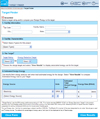
To optimize building energy performance through an iterative design and analysis approach.
This online calculator was used to identify the site & source energy use intensity for the project as well as its projected CO2 emissions. The tool was also used to compare the energy use intensity of the project with conventional buildings of similar type and location as well as with high performance buildings (top 10%) as defined in the target finder tool. The tool was relatively easy to use and offered students a realistic benchmark to compare the performance of their projects to.
eQuest
http://doe2.com/equest/index.html
FREEware
eQUEST® is a sophisticated, yet easy to use, freeware building energy use analysis tool that provides professional-level results with an affordable level of effort. eQUEST was designed to allow you to perform detailed comparative analysis of building designs and technologies by applying sophisticated building energy use simulation techniques but without requiring extensive experience in the "art" of building performance modeling. This is accomplished by combining schematic and design development building creation wizards, an energy efficiency measure (EEM) wizard and a graphical results display module with a complete up-to-date DOE-2 (version 2.2) building energy use simulation program. You can read the eQUEST Overview to get a more complete summary of the features and capabilities of this excellent program.

This tool was used to conduct a whole building energy use simulation of student's final design project (after several optimizations using ECOTECT). This was needed because ECOTECT simulates only heating and cooling loads and does not simulate whole building energy use. Results from eQUEST were used as the basis for sizing a PV system and subsequently calculating the projected carbon footprint of the project. Students were limited to using eQUEST's design development wizard which reduced the number of needed inputs, thus making it possible for students to conduct a relatively quick and reasonably accurate simulation. However, the DD wizard is based on several built-in assumptions that may well affect the accuracy of the results.
Use the LEED® checklist and the eQuest computer program to monitor
building performance throughout the schematic design phase.
FloVent
http://www.flomerics.com/products/flovent/
FloVENT is a powerful Computational Fluid Dynamics (CFD) software that predicts 3D airflow, heat transfer and contamination distribution in and around buildings of all types and sizes.

Elzeyadi
Green Building Studio
http://usa.autodesk.com/adsk/servlet/index?id=11179508&siteID=123112
Purchased product
The Autodesk® Green Building Studio® web-based energy analysis service can help architects and designers perform whole building analysis, optimize energy efficiency, and work toward carbon neutrality earlier in the design process. With faster, more accurate energy analysis of building design proposals, architects and designers can work with sustainability in mind earlier in the process, plan proactively, and build better.

HEED - Home Energy Efficient Design
http://mackintosh.aud.ucla.edu/heed/
FREE DOWNLOAD (for both Mac and Windows)
This new easy-to-use program shows you how much energy and money you can save by making various Design or Remodeling changes to your home. You can easily draw in the floorplan of your own house, then click and drag your windows to their correct location. You can select from lists of standard wall and roof construction. This version adds a number of new features including allowing changes to electric and gas utility rates, adding rates for oil and propane, allowing pollution data to be revised, allowing attic radiant barriers to be added or removed, offering operable shading, improving the thermal mass algorithm (admittance factor), and solving a problem with windows. Climate data is available for over one thousand locations around the world.

Used to conduct an energy analysis of a small residential building in order to provide diagrams and values for use in a competition.
Opaque software from UCLA was used to model the thermal properties of the wall, while HEED was used to model the thermal performance of the building.
Use HEED to compare the performance of the proposed design to a similar design that simply meets code.
Use HEED to determine total energy consumption and origin of different loads using the energy costs screen. This screen presents the results in different units of energy and carbon emissions for: air conditioning, fans and blowers, lights, equipment and appliances, electric heat or pumps, water heater, appliance fuel and furnace fuel.
Peña
Multiple iterations of digital modeling at a variety of scales (quantitative as well as qualitative). Presently working on earlier multiple iterations of energy modeling (including site solar access studies, which are required and particularly vital for some projects).
Home Energy Saver
http://hes.lbl.gov/
ONLINE TOOL (All platforms) - U.S. locations only
The first Internet-based tool for calculating energy use in residential buildings. The project is sponsored by the U.S. Environmental Protection Agency and the U.S. Department of Energy as part of their national ENERGY STAR® Programs for improving energy efficiency in homes. The Home Improvement Tool is a simplified version of this site.

Use Home Energy Saver to determine total energy consumption and the origin of the different loads using the results screen: heating, cooling, hot water, lighting, major appliances, miscellaneous
Opaque
http://apps1.eere.energy.gov/buildings/tools_directory/software.cfm/
ID=149/pagename=alpha_list OR
http://www2.aud.ucla.edu/energy-design-tools/
FREE DOWNLOAD
Draws a detail of wall or roof sections, calculates U-value, Time Lag, and Decrement Factor. It plots temperature drop through the section. Draws 2-D daily and 3-D annual plots of Outdoor and Sol-Air Temperatures, Normal and Total Surface Radiation, and Heat Flow through the envelope.

Opaque software from UCLA was used to model the thermal properties of the wall, while HEED was used to model the thermal performance of the building.
Optics
http://eetd.lbl.gov/eetd-software-optics.html
FREE DOWNLOAD
A computer program to calculate the optical properties of glazing systems and laminates. The program can be used to construct new laminates from existing components and manipulate glazing layers by adding coatings, films, changing the substrate or changing the thickness. Optics includes the International Glazing Database with measured spectral data of more than 1000 different glazings.
PV Calculators
PV-Watts
http://rredc.nrel.gov/solar/codes_algs/PVWATTS/
Use this tool to size photovoltaic systems and predict their energy output for many cities in the US.
Peña
Psychrometric Chart Tutorial
http://www2.aud.ucla.edu/energy-design-tools/
FREE DOWNLOAD
This tutorial is available as an online free Flash module to walk designers through the use of the Psychrometric Chart as a passive design tool. Scroll down the above page to locate the link to the tutorial.

REScheck
http://www.energycodes.gov/rescheck/download.stm
FREE DOWNLOAD (for both Mac and Windows)
The above link takes you to the Department of Energy site to access this compliance tool and materials that make it easier for designers, builders, product manufacturers, and code officials to comply with energy codes based on the IECC or ASHRAE/IESNA Standard 90.1 requirements. The REScheck™ (formerly MECcheck) compliance product includes software and accompanying user's guides, videos, training materials, and compliance manuals.
RETscreen
http://www.iesve.com/content/default.asp?page=home
http://www.retscreen.net/ang/home.php
FREE download - (PC only)
The RETScreen Clean Energy Project Analysis Software is a unique decision support tool developed with the contribution of numerous experts from government, industry, and academia. The software, provided free-of-charge, can be used worldwide to evaluate the energy production and savings, costs, emission reductions, financial viability and risk for various types of Renewable-energy and Energy-efficient Technologies (RETs). The software (available in multiple languages) also includes product, project, hydrology and climate databases, a detailed user manual, and a case study based college/university-level training course, including an engineering e-textbook.
Demers+Potvin
Skylight
Elzeyadi
Solar-2
http://www2.aud.ucla.edu/energy-design-tools/
FREE DOWNLOAD
Plots sunlight penetrating through a window with any combination of rectangular fins and overhangs. Also plots hour-by-hour 3-D suns-eye view movie of the building. Prints annual tables of percent of window in full sun, radiation on glass, etc.

Haglund
Solar 5.7
http://www.aud.ucla.edu/energy-design-tools/
Displays 3-D plots of hourly energy performance for the whole building or for any of 16 different components. It also plots heat flow into/out of thermal mass, and indoor air temperature, output of the HVAC system, cost of electricity and heating fuel, and the corresponding amount of air pollution. It uses hour-by-hour weather data, and can call RATES in the background to calculate detailed electricity costs. It has many special commands like overlay, post-it, and compare. Downloads are no longer avaialbe as the software has been included in HEED.

Peña
Sol Path
Bagneid
THERM
http://windows.lbl.gov/software/therm/therm.html
FREE DOWNLOAD (PC only)
A computer program for modeling two-dimensional heat-transfer effects in building components such as windows, walls, foundations, roofs, doors and other products where thermal bridges are of concern. THERM's two-dimensional conduction heat-transfer analysis is based on the finite-element method, which can model complicated geometries.
The Weather Tool
http://ecotect.com/products/weathertool
Purchased product
The Weather Tool is a visualisation and analysis program for hourly climate data. It recognises a wide range of international weather file formats as well as allowing users to specify customised data import formats for ASCII files. It also provides a wide range of display options, including both 2D and 3D graphs as well as wind roses and sun-path diagrams.

This tool was used to conduct a climate analysis of the different selected project locations. In addition to its capability to provide a graphical analysis of the main climate parameters (temperature, humidity, etc.), the tool also included the capability of assessing the impact of one or a combination of passive design strategies on the thermal comfort of the building's occupants. This feature proved very useful for student to explore combinations of passive strategies at different times of the year and to identify the optimum mix of strategies for their location.
Use Climate Consultant and the Weather Tool to determine design strategies that could be incorporated in the design of the house to reduce energy use and CO2 emissions.
Window
http://windows.lbl.gov/software/window/window.html
FREE DOWNLOAD
A window thermal analysis computer program that is the de facto standard used by U.S. manufacturers to characterize product performance. The program has been selected by the newly formed National Fenestration Rating Council as the basis for development of energy rating labels for windows.

Daylighting / Lighting Software
AGI-32
http://www.agi32.com/
Lighting analysis software program for lighting calculations and renderings of electric lighting and daylighting systems.
x
Elzeyadi
Autodesk Lightscape
DaySIM (CNRC's Library)
http://irc.nrc-cnrc.gc.ca/ie/lighting/daylight/daysim_e.html
DAYSIM is a daylighting analysis software that calculates the annual daylight availability in arbitrary buildings as well as the lighting energy use of automated lighting controls (occupancy sensors, photocells) compared to standard on/off switches.
Daysim combines the backward raytracing software Radiance with a daylight coefficients approach. The underlying sky model to calculate annual illuminance profiles is the Perez all weather sky model. Annual illuminance profiles are coupled with user occupancy data to predict the annual use of electric lighting in a building zone depending on the lighting and blind control strategy.
Daysim has been linked to the popular Ecotect building design software. Ecotect models can be directly exported to Daysim for further analysis. Vice versa, Daysim results can be imported back into Ecotect for presentation.
DaySIM Tutorial:
http://irc.nrc-cnrc.gc.ca/ie/lighting/daylight/daysim/docs/
DaysimTutorial.pdf

Recent import of CNRC's library (DAYsim) of materials has recently provided every good results. This software is also of great use in sun shading analysis, specially the shading mask tool and for finding the solar radiation exposure of the various surfaces of the project. However, the thermal simulation application is much more limited, specially for the study of natural ventilation schemes. The acoustical application has only been used sparsely but offers outputs that are convincing in terms of representation of the invisible. Digital photography: a digital method of image analysis is used for qualitative analysis of lighting patterns. Thermography: (new) will integrate an exercise (at the seminar) for case study analysis. Already integrated in research-creation by the Faculty.
Demers+Potvin
Ecotect
Daylight Analysis software engine.

IES Virtual Environnent
http://www.iesve.com/content/default.asp?page=home
Version 3 of IES VE-Ware is now available to download - it includes both Revit and SketchUp connectivity, and can now recognise SketchUp components and groups. VE-Ware is our FREE building energy usage and carbon dioxide emission assessment software that can make a real difference to the green credentials of a building, as well as benchmark it against the US Architecture 2030 Challenge. It is suitable for all building types across worldwide locations, and can be set to either Imperial or Metric units.
Thomson
Software used in modeling environments for UWM Solar Decathlon House
LightCalc
http://www.lightcalc.com/
Purchased product
The program works with information the designer has ready access to; ceiling height, room width and length, counter height, color pallette, etc.
Upon entering the above type of information, LightCalc goes to work determining the appropriate footcandle level, fixture spacing, and it will suggest a ceiling layout for your fixtures. Designers will enjoy the point and click method and the visual display of what the light is doing.
LUMcalcul
Useful for determing the Daylight Factor.
Demers+Potvin
Lumen Designer
http://www.lighting-technologies.com/Products/LumenDesigner/design.htm
Purchased product
Lumen Designer includes the power and the tools to design any architectural space you can imagine - in less time than you thought possible. Armed with a CAD system that rivals standard CAD software, extendable libraries of objects, materials, and lighting products, plus state-of-the-art radiosity calculations, you have the power to spend your time designing and imagining the possibilities.
x
Haglund
Lumen-Micro 2000
http://www.lighting-technologies.com/Products/LumenMicro/LM.htm
Lumen Micro provides you with tools to create and simulate lighting layouts for both indoor and outdoor applications in a quick and easy to use manner. Interior spaces and exterior sites may be easily modeled using Lumen Micro's advanced CAD capabilities, then accurate numerical and graphical results are only a click away.
x
Haglund
Radiance
http://radsite.lbl.gov/radiance/
A photometrically accurate computer-generated graphic simulation of lighting in indoor environments. The ultra-realistic images produced by the program facilitate the designer's visualization of lighting design options.
This tool was only utilized through exporting form ECOTECT with the aim of providing students with a method of producing accurate rendering of daylighting conditions in their projects. Most students had no difficulty performing the rendering, however, it has to be noted that exporting form ECOTECT limits the possibility of taking advantage of the capabilities of RADIANCE. Students were also hampered by the lack of windows-compatible material files.
Radiance is optional (3d model imported from ECOtect). 3DSmax also optional.
Demers+Potvin
Using Ecotect and Radiance determine illuminance level in different areas of the house to be sure that daylight levels are maximized to provide enough daylight and without glare.
To develop a daylighting design solution for the space using either: 1) side lighting, 2) top lighting, or 3) a combination of the two (depending on the location, orientation, and size of your selected space, and using daylighting design guidelines and rules of thumb as a starting point.
3-D Modeling software
3-D Studio Max
http://usa.autodesk.com/adsk/servlet/index?
siteID=123112&id=5659302
Purchased Product - (PC and Mac) - Academic Pricing Available
This full-featured 3D modeling, animation, rendering, and effects solution is used to produce games and film and video content.
Design Workshop
http://www.artifice.com/free/dw_lite.html
FREE DOWNLOAD - (PC and Mac)
The complete freeware DesignWorkshop Lite software package provides all you need to build your own 3D models for home design and visualization of architecture, landscapes, exhibits, or any kind of spatial design. With DesignWorkshop Lite you can view and walk-through ready-made models of any size, like the free 3D building models in the Great Buildings Online, in DXF, DesignWorkshop, or 3DMF format, with amazing live 3D speed.
Form-Z
http://www.formz.com/
Purchased Product - (PC and Mac) - Academic Pricing Available
form•Z RenderZone Plus provides the ultimate in photorealistic rendering with Global Illumination based on Final Gather, Ambient Occlusion, and Radiosity, for advanced simulation of lighting effects and rendering techniques. All three techniques are offered through simple interfaces that arm designers with a product that requires little effort to set up, is easy to control, and produces stunning results in a short period of time.
SketchUp
http://sketchup.google.com/
FREE DOWNLOAD
http://sketchup.google.com/download/
SketchUp Pro - purchased product - required to work with a multitude of PlugIns
http://sketchup.google.com/download/plugins.html
Energy Plugins Sites
http://blog.miragestudio7.com/2008/04/earth-day-energy-simulation-plugins-for-sketchup/
http://bldgsim.wordpress.com/tag/sketchup/
http://www.archdaily.com/7012/free-sketchup-plugins-for-download/
SketchUp is handy as the EnergyPlus software works as a plug in.
x
Elzeyadi
x
Haglund
x
Stannard
x
Theis
Building Information Modeling Software
Revit
http://usa.autodesk.com/adsk/servlet/index?id=3781831&siteID=123112
Purchased Produce - (PC only) - Academic Pricing Available
Revit® Architecture building design software is purpose-built for building information modeling (BIM), key for sustainable design. Make a change and it's automatically coordinated throughout your project, so your designs and documentation stay consistent and complete.
x
Haglund
Revit used in the modeling of the UWM Solar Decathlon House
Revit was the software used to model all of the Building Case Studies used in the Carbon Neutral Design Project.
Wasley
Revit Structure and MEP Software
http://usa.autodesk.com/adsk/servlet/index?id=5523749&siteID=123112
Purchased Product - (PC only) - Academic Pricing Available
Revit® Structure software integrates a multimaterial physical and an independently editable analytical model for efficient structural analysis, design, and documentation.
http://usa.autodesk.com/adsk/servlet/index?siteID=123112&id=6861034
Purchased Product - (PC only) - Academic Pricing Available
Revit® MEP software works the way MEP professionals think. Purpose-built for building information modeling (BIM), Revit MEP allows you to see your designs before they're built, allowing you to accurately create MEP systems for today's complex architectural designs. All changes are automatically coordinated everywhere in your project. Design and documentation stay coordinated, consistent, and complete.
LCA Tools
Athena Institute's ecoCalculator
http://www.athenasmi.ca/tools/ecoCalculator/
downloadEcoCalculator.html
FREE DOWNLOAD (an Excel spreadsheet, so works in PC and Macs)
The Athena EcoCalculator provides life cycle assessment results for more than 400 common building assemblies. The Athena Institute is a non-for-profit organization which assists architects and engineers in environmental considerations with regard to LCA of buildings.

Kaiser
BEES 4.0
http://www.bfrl.nist.gov/oae/software/bees/
FREE DOWNLOAD - (PC only)
The BEES (Building for Environmental and Economic Sustainability) software brings to your fingertips a powerful technique for selecting cost-effective, environmentally-preferable building products. Developed by the NIST (National Institute of Standards and Technology) Building and Fire Research Laboratory the tool is based on consensus standards and designed to be practical, flexible, and transparent. Version 4.0 of the Windows-based decision support software, aimed at designers, builders, and product manufacturers, includes actual environmental and economic performance data for 230 building products.
BEES measures the environmental performance of building products by using the life-cycle assessment approach specified in the ISO 14040 series of standards. All stages in the life of a product are analyzed: raw material acquisition, manufacture, transportation, installation, use, and recycling and waste management. Economic performance is measured using the ASTM standard life-cycle cost method, which covers the costs of initial investment, replacement, operation, maintenance and repair, and disposal. Environmental and economic performance are combined into an overall performance measure using the ASTM standard for Multi-Attribute Decision Analysis. For the entire BEES analysis, building products are defined and classified according to the ASTM standard classification for building elements known as UNIFORMAT II.
Provides a means of conducting a life cycle assessment analysis of building materials/systems.
Elzeyadi
Rashed-Ali
US DOE Building Energy Software Athena Model
Provides a means of conducting a life cycle assessment analysis of building materials/systems.
Rating Systems
Green Globes
http://www.greenglobes.com/
The Green Globes system is a building environmental design and management tool. It provides online assessment protocols, rating system and guidance for green building design, operation and management. It provides recognition of a building's environmental attributes through third-party verification.
Kaiser
LEED®
American Versions
http://www.usgbc.org
Information available on the web site, but full Guides are a purchased product.
Canadian Versions
http://www.cagbc.org
Information available on the web site, but full Guides are a purchased product.
The Leadership in Energy and Environmental Design (LEED®) Green Building Rating System™ encourages and accelerates global adoption of sustainable green building and development practices through the creation and implementation of universally understood and accepted tools and performance criteria.
LEED® is a third-party certification program and the nationally accepted benchmark for the design, construction and operation of high performance green buildings. LEED® gives building owners and operators the tools they need to have an immediate and measurable impact on their buildings' performance. LEED® promotes a whole-building approach to sustainability by recognizing performance in five key areas of human and environmental health: sustainable site development, water savings, energy efficiency, materials selection and indoor environmental quality.
Boake
Elzeyadi
Kaiser
SBTool
SBTool is the upgrade of GBTool which was the evalutation system used as the basis of The Green Building Challenges in 1998, 2000, 2002
http://www.greenbuilding.ca/iisbe/sbc2k8/sbc2k8-download_f.htm
FREE download for academic or research purposes.
SBTool is a generic framework for rating the sustainable performance of buildings and projects. It may also be thought of as a toolkit that assists local organizations to develop rating systems.
The system covers a wide range of sustainable building issues, not just green building concerns, but the scope of the system can be modified to be as narrow or as broad as desired, ranging from 125 criteria to half a dozen;
The system allows third parties to establish parameter weights that reflect the varying importance of issues in the region, and to establish relevant benchmarks by occupancy type, in local languages. Thus, many rating systems can be developed in different regions that look quite different, but share a common methodology and set of terms. The main advantage, however, is that an SBTool version developed with local knowledge is likely to be much more relevant to local needs and values than other systems;
Sun Angle Calculators
Pilkington Sun Angle Calculator
http://www.sbse.org/resources/sac/index.htm
Purchased product, ordered directly through SBSE who is the only current distributor.
This handy tool provides a relatively simple method of determining solar geometry variables for architectural design, such as designing shading devices or locating the position of the sun relative to a particular latitude and time. The Sun Angle Calculator is a quick and accurate tool and has been used extensively by educators, researchers, and design professionals for the past 50 years. Permission to reproduce and distribute the Sun Angle Calculator has been provided by Pilkington to the Society of Building Science Educators (SBSE). The Sun Angle calculators are now printed on a high quality styrene and have a nylon screw and nut for quick assembly (no more chasing the little brass screws all over the lecture hall!).

Shadows Program
http://www.shadowspro.com
FREE download of the entry level program
Shadows is a program used to design sundials and astrolabes. It can be used by everybody without any required technical skills. Shadows will calculate everything and print the drawing according the user's preferences.
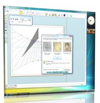
I would recommend www.shadowspro.com if you want to use it for practical purposes (like doing heliodon studies outside etc). It's a great resource for any latitude and any kind of sun peg chart.
Andersen
Sun Path Chart Program
http://solardat.uoregon.edu/SunChartProgram.html
ONLINE TOOL.
This program creates sun path charts in Cartesian coordinates for: (1) "typical" dates of each month (i.e.; days receiving about the mean amount of solar radiation for a day in the given month); (2) dates spaced about 30 days apart, from one solstice to the next; or (3) a single date you specify. You can select whether hours are plotted using local standard time or solar time. In addition, there are a number of options available to allow you to alter the chart's appearance. Resulting charts are displayed in your Web browser window, and they are meant to be printed out. Two formats are currently available: PDF (Adobe) and PNG (a standard international graphics format).
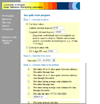
Sustainable by Design
http://www.susdesign.com/sunangle/
ONLINE tool
This is an easy to use online calculator to work out solar angles.

This is a cool online sun angle calculator that works everywhere on this planet.
Boake
Carbon / Ecological Footprint Calculators
Athena EcoCalculator
http://www.athenasmi.org/tools/ecoCalculator/
FREE download (Excel spreadsheet)
The EcoCalculator can be used for new construction projects, retrofits and major renovations, and for industrial, institutional, office or residential designs, either to compare specific assemblies or to assess all of the assemblies in a structure.

Carbon Construction Calculator
http://www.buildcarbonneutral.org
ONLINE tool
Constructing new buildings and sites with the least possible environmental impact involves three important steps: reduce, renew and offset. Offsetting means calculating the project's carbon footprint so it can be balanced by funding resources or activities like renewable energy and land protection — resources that benefit and protect the planet.
This tool estimates the embodied energy and subsequent carbon amounts released during construction. The measurements account for building materials, processes and carbon released due to ecosystem degradation or sequestered through landscape installation or restoration.

Carbon Footprint
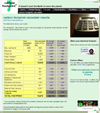
Mountain Equipment Coop Ecological Footprint Calculator
http://www.mec.ca/Apps/ecoCalc/ecoCalc.jsp;jsessionid=HGwGFGs
2kXn21jk1vc6GDRr27Qc3tpN0hBmyndnBwVhVpMg56Rv5
!-638142573
General ecological footprint calculator.
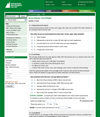
Redefining Progress

World Wildlife Foundation Footprint Calculator

Zero Footprint

Climate Data Sources
Climate Design Resources, UC Berkeley
www.lib.berkeley.edu/ENVI/climate.html
This site provides links to climate data as well as climate-responsive and "green architecture" design resources.
EERE Weather Data Sources
National Climate Data Center (NCDC)
Western Regional Climate Center
http://www.wrcc.dri.edu/climsum.html
Local Climate Data (LCD) Summaries for Western Cities for one-page summaries containing normal temperatures and relative humidity, as well as other data needed for most architectural climate analysis. Follow link to Climatological Data Summaries for many small towns and weather stations, state-by-state. These data sets contain detailed temperature and precipitation data and graphs that can be cut-and-pasted or saved and opened in Word, Excel and PowerPoint documents.
Physical / Other Modeling Tools
Artificial Sky
A mirror box artificial sky and a heliodon are used to validate daylighting performance of models at early design stages under overcast and clear skies.
Students select the simulation process. Emphasis on physical modeling in the artificial sky using photocells (quantitative results) and digital photography (qualitative results). ECOTECT simulations that were used early in the design process are now tested with more refined simulations with physical modeling in the artificial sky.
Demers+Potvin
Daylighting I
Daylighting II
Daylighting III
CIE Calibrated Photocells
CIE calibrated photocells, luminance meter (new) for measurements in physical models.
Demers+Potvin
Heliodon
The heliodon is useful to test physical models to help in visualizing the physical extent of solar access and shadows.
A conceptually simple to understand heliodon has been developed by Professor Norbert Lechner of Auburn University. For purchase details: http://www.hpd-online.com/heliodons.asp
More info on heliodons: http://www.bsu.edu/web/ceres/heliodon/htmlside/Background.htm

Using a physical model on a heliodon to understand the effect of natural lighting on the quality of light in the interior environment and to design solar shading devices.
The strategy for investigating this topic is definitely a cyclical one that is borne out primarily in section and plan, culminating with either a physical model or digital model that tests assumptions. Drawings can document concepts but models are really required to provide some testing an proofs. Then, once the models prove or disprove an assumption, legitimate drawings can be developed.
Sun Dial
Water Flume
A water flume (hydraulic canal) is used at the site scale in order to optimize wind conditions and control snow drifting around the building using a sand particle erosion technique. It can also be used to visualize airflow distribution within a pace using tracing ink. Waterflume can easily be used throughout the design process.

Wells Checklist
http://www.sbse.org/resources/
FREE download available in multiple languages
English: http://www.sbse.org/resources/docs/wells_checklist_english.pdf
A Regeneration-based Checklist for Design and Construction

Analyze the strengths and weaknesses of twenty-two facets of the design.
Wind Tunnel
Large scale wind tunnels can be used to verify wind flow around buildings as a means to locate openings, maximize natural ventilation and determine the resultant climate in the local area.

Top 10 Web Sites list
2030
http://www.architecture2030.org
A go to web site for an overview of issues related to Carbon.
BuildingGreen
EERE High Performance Buildings Database
Energy Star Program EPA
Lawrence Berkeley Labs Environmental Technologies
UCLA energy software free downloads
Www Energy Design Tools Aud Ucla Edu Climate Consultant
Source: https://www.tboake.com/carbon-aia/tools1.html
Posted by: martinthessalky.blogspot.com

0 Response to "Www Energy Design Tools Aud Ucla Edu Climate Consultant"
Post a Comment